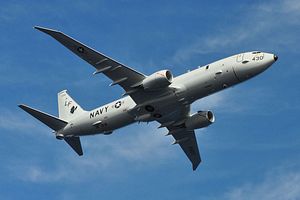China continues to work to restrict access to the airspace above its South China Sea claims by U.S. and other military aircraft. Last week, a CNN crew documented communication by People’s Liberation Army ground crews on one of China’s artificial islands in the Spratly group warning a U.S. Navy P-8A Poseidon maritime surveillance aircraft to leave the area.
“Leave immediately and keep out to avoid any misunderstanding,” the Chinese voice reportedly said to the crew of the U.S. Navy P-8A. In response to the warning, the U.S. Navy crew used a standard declaration: “I am a sovereign immune United States naval aircraft conducting lawful military activities beyond the national airspace of any coastal state.”
“In exercising these rights guaranteed by international law, I am operating with due regard for the rights and duties of all states,” the U.S. response continues.
The United States conducts these kinds of aerial operations in the South China Sea to assert freedom of overflight, along with freedom of navigation operations conducted by U.S. Navy surface vessels. These operations are designed to assert a right for military aircraft and warships to fly and sail where allowed by international law.
In the past, China has made references to a “military alert zone” over the South China Sea — a term undefined in international law. According to CNN, the P-8A flew past Subi Reef, Fiery Cross Reef, Johnson Reef, and Mischief Reef. Three of those — Subi, Fiery Cross, and Mischief — host airstrips capable of accommodating any aircraft in the Chinese navy and air force inventory.
The U.S. Navy has been working with CNN and other news organizations since at least mid-2015 to publicized Chinese practices in the South China Sea. The latest access — with a CNN video crew on-board a P-8A — serves to underline China’s continued rule-breaking behavior in the area, in line with the Pentagon’s stepped up efforts this year to name-and-shame China, beginning with the disinvitation to the Rim of the Pacific biennial multilateral naval exercise in May. In 2015, a CNN crew aboard a P-8A documented eight warnings from a Chinese ground crew, back when China did not acknowledge any militarized role for its artificial islands.
The Chinese Ministry of Foreign Affairs has not made any public comment on the incident reported by CNN. The P-8A flyover in the South China Sea follows a flight by U.S. B-52 strategic bombers through China’s East China Sea air defense identification zone earlier in August.

































